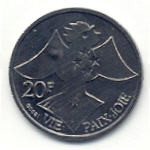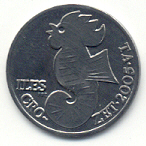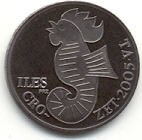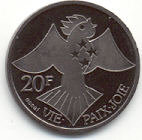 |
 |
| Crozet Island |
|
It is one of four districts of the French Southern and Antarctic
Lands. The Crozet Islands were first discovered by the expedition of
Marc-Joseph Marion du Fresne, a French explorer, who landed on January
24, 1772 on Île de la Possession, claiming the archipelago for France.
He named the islands after his second-in-command Jules Crozet (He had
already named Marion Island after himself). In the early 19th century, the islands were often visited by sealers, to the extent that the seals had been nearly exterminated by 1835. Subsequently, whaling was the main activity around the islands, especially by the whalers from Massachusetts. Shipwrecks occurred frequently at the Crozet Islands. The British sealer Princess of Wales sank in 1821, and the survivors spent two years on the islands. In 1887, the French Tamaris was wrecked and her crew stranded on Île des Cochons. They tied a note to the leg of a Giant Petrel, which was found seven months later in Fremantle. Alas, the crew was never recovered. Because shipwrecks around the islands were so common, for some time the Royal Navy dispatched a ship every few years to look for stranded survivors. France originally administered the islands as a dependency of Madagascar, but they became part of the French Southern Territories in 1955. In 1961, a first research station was set up, but it wasn't until 1963 that the permanent station Alfred Faure opened at Port Albert on Île de la Possession (both named after the first leader of the station). The station is staffed by 18 to 30 people (depending on the season) and does meteorological, biological, and geological research and maintains a seismograph. |
||||||||||||||||||||||||||||||||||||||||||||||||||||||||||||||||||||||||||||||||||||||||||||||||
| Mr. Zinkann designed pattern / trial coins on Crozet Islands in various metals having 22 mm diameter and 1.0 mm thickness. The CuNi Type II has 1.25 thickness with flat design. He got metal sheets from Johnson Matthey in Boston, Massachusetts and then they were minted at Pressed Metal Products. These coins are known as Double Rooster 20 Francs commemorating the Year of Rooster. High Relief coins were produced in Brass, CuNi Type I, Gold 18K Red and Silver metals. High Relief dies failed after striking of Iridium coin. Details of these coins are indicated below: | ||||||||||||||||||||||||||||||||||||||||||||||||||||||||||||||||||||||||||||||||||||||||||||||||
|
||||||||||||||||||||||||||||||||||||||||||||||||||||||||||||||||||||||||||||||||||||||||||||||||
 |
 |
|||||||||||||||||||||||||||||||||||||||||||||||||||||||||||||||||||||||||||||||||||||||||||||||
|
Information on Molybdenum: Symbol: Mo, Atomic Number: 42, Atomic mass: 95.94 g/mol, Density: 10.28 g·cm−3, Melting Point: 2623 °C. Molybdenum is a hard, heavy, grayish-colored metal that is very corrosion resistant. The metal's primary use is as an alloying agent to promote hardness in specialty steels used for high-speed cutting tools. It is very resistant to corrosion by acids and many other corrosive materials. Pure molybdenum thin sheet is used for x-ray tubes and electric furnaces due to its resistance to high temperatures. |
||||||||||||||||||||||||||||||||||||||||||||||||||||||||||||||||||||||||||||||||||||||||||||||||
|
|
 |
|||||||||||||||||||||||||||||||||||||||||||||||||||||||||||||||||||||||||||||||||||||||||||||||
|
Information on Tantalum: Symbol: Ta, Atomic Number: 73, Atomic mass: 180.94788 g/mol, Density: 16.69 g·cm−3, Melting Point: 3017 °C. Tantalum is an extremely hard, durable gray-colored metal which has excellent corrosion resistance. With the right lighting and surface texture Tantalum shows a definite pinkish tinge to its metallic color. The metal has many uses including electrolytic capacitors, in alloys to improve properties, and surgical and dental tools. It is a good crucible material due to its resistance to corrosive materials. Tantalum has an extremely high melting point, exceeded only by osmium, rhenium and tungsten, and is also very dense. |
||||||||||||||||||||||||||||||||||||||||||||||||||||||||||||||||||||||||||||||||||||||||||||||||
| I got my 20 Francs Molybdenum and Tantalum coins from Elizabeth Anne Zinkann (ezinkann@comcast.net). | ||||||||||||||||||||||||||||||||||||||||||||||||||||||||||||||||||||||||||||||||||||||||||||||||
| Micro-Nations | ||||||||||||||||||||||||||||||||||||||||||||||||||||||||||||||||||||||||||||||||||||||||||||||||
| Chiefa Coins | ||||||||||||||||||||||||||||||||||||||||||||||||||||||||||||||||||||||||||||||||||||||||||||||||
